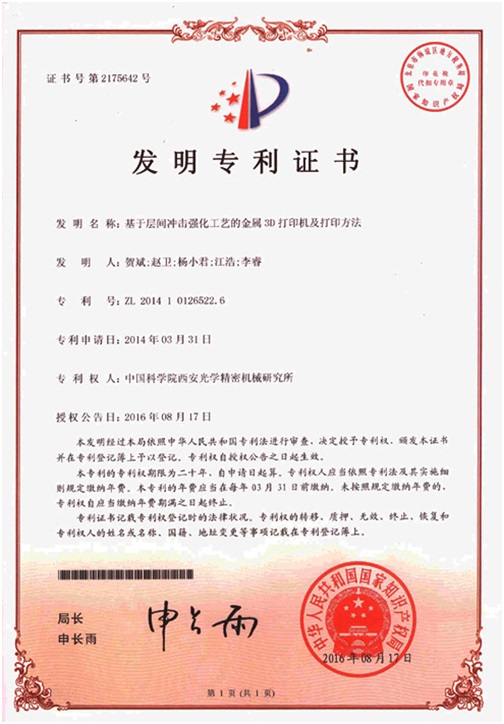The metal 3D printing technology is an advanced manufacturing technology able to directly shape metal parts with complicated structure and excellent mechanical property through point, line and plane accumulating. However, during the shaping, the operating principle of shaping through gradual accumulation makes it almost inevitable to cause defects of cavity and porosity in the shaped parts and cracks are liable to appear in the shaped parts of most materials. Even a part is shaped with the material having the best shapability and finished with hot isostatic pressing and thermal treatment process, its mechanical behavior under high temperature such as high-temperature fatigue property will remain unable to reach the standard for forgings.
Researchers He Bin, Zhao Wei, Yang Xiaojun, etc. from the Laboratory for Transient Optics and Photon Technology, XIOPM, after deep study, invented a cladding layer-oriented shocking method, which adopts reasonable process according to different characteristics of cladding layers to eliminate internal defects of cladding layers, refine the grain size, enhance the residual stress and pressure in cladding layers and finally increase mechanical properties of metal parts, particularly the high-temperature fatigue mechanical properties.
Compared with traditional techniques, the invention can shock the shaped cladding layers by stages during metal 3D-printing shaping, so as to eliminate defects of cavity, porosity and micro-crack in cladding layers, improve the shaped parts’ density, ensuring surface precision of 3D printed parts while improving the density and enhancing the mechanical properties. The invention has been granted a national invention patent recently. (By the Department of Sci-Tech and Management)



